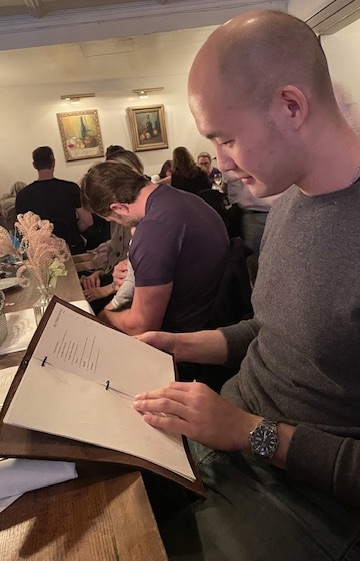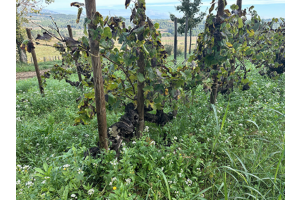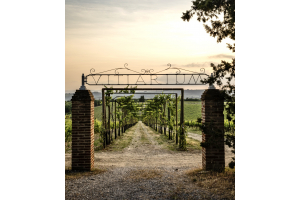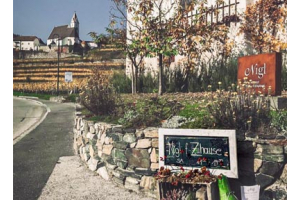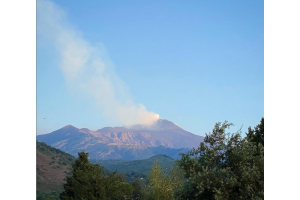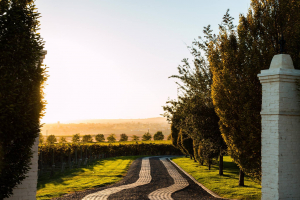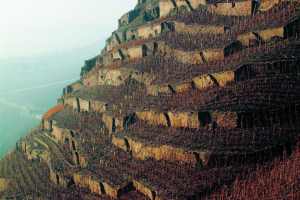First and foremost, the North Adriatic is not another official wine region that we need to memorize for an upcoming wine certification exam (yet). It is, however, a unique concept that encompasses a group of wine regions in three vastly different countries. The different jurisdiction that crisscrosses the area conceals the fact that they share many historical and cultural commonalities, which contribute greatly to the quality and styles of wines being produced in the area.
Promoted by Paul Balke (a Dutch pianist, writer, and author of the book North Adriatic), the area of North Adriatic includes the wine regions of:
- Friuli-Venezia Giulia (“Friuli”) in northeast Italy. Some specific sub-regions include:
- Collio
- Colli Orientali del Friuli (“Colli Orientali”)
- Friuli Grave (“Grave”)
- Friuli Latisana (“Latisana”)
- Friuli Annia (“Annia”)
- Friuli Aquileia (“Aquileia”)
- Friuli Isonzo (“Isonzo”)
- Carso
- Primorska in western Slovenia. Some specific sub-regions include:
- Goriska Brda (“Brda”)
- Vipavska Dolina (Vipava valley)
- Kras (Slovene Karst)
- Slovenska Istra
- Istria and Kvarner of northwest Croatia.
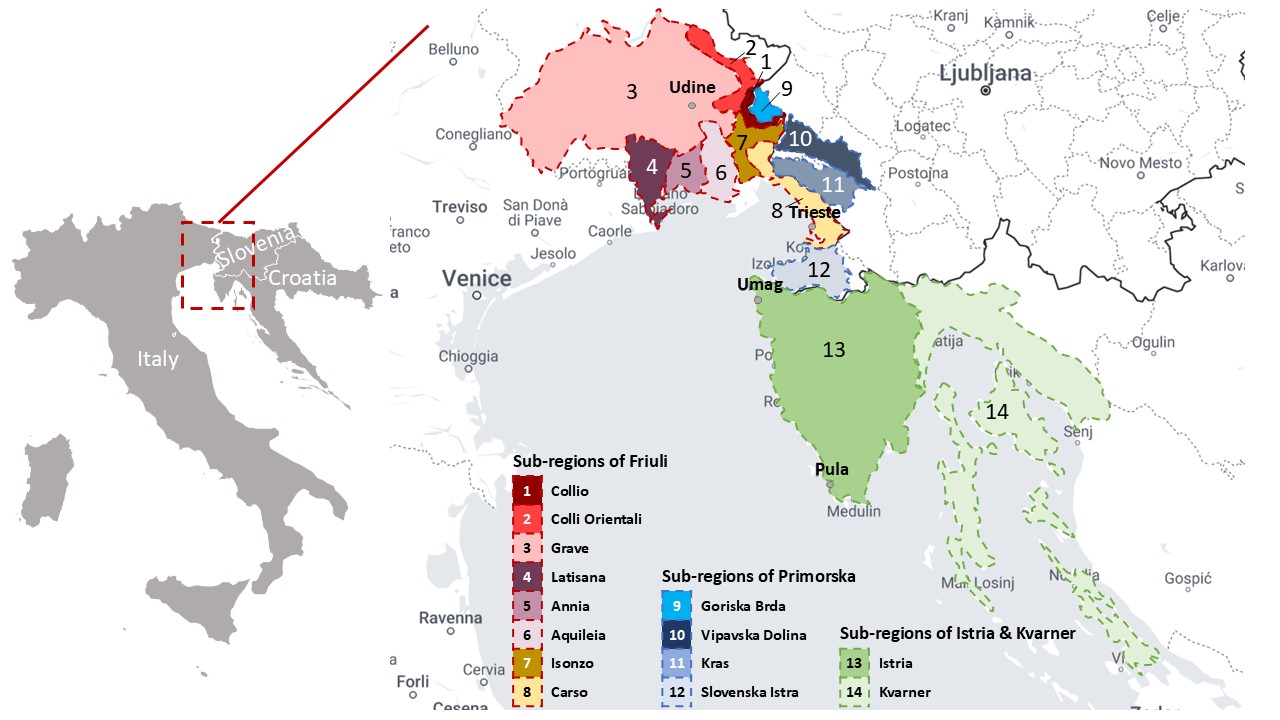
(Wine regions of the North Adriatic)
For the past 200 years, the North Adriatic has been in constant change due to the unfolding of power struggles between ruling European powers of the area. These historical powers include the Venetian Republic, Holy Roman Empire, Austrian Empire, Austro-Hungarian Empire, and the Kingdom of Italy. As these ruling republics, kingdoms, nations, or empires adapted to the evolution from factors such as the industrial revolution, imperialism, geopolitical upheaval, and globalism, the territorial borders that divided the wine regions within the North Adriatic were redrawn much more frequently than we can imagine today.
That is how we arrive at the three wine regions coming from vastly different nations being grouped under one collective area today. Although this may seem odd, once we get past our superficial understanding of this particular area, we can reveal the historical and cultural context that informs us of their interconnected roots.
A little background of North Adriatic
The three countries we are familiar with today have been formed by compounding political and economic events such as the dissolution of the Venetian Republic, establishment of the Austrian Empire, the Italian unification, the two World Wars, and the formation/dissolution of the Soviet Union and Yugoslavia. But despite their distinct identities, the cultural divide between them at this particular intersection is murkier.
Although the people of these regions were of different cultural origins (Venetian, Austrian, Slavic, etc.), under the unifying reign of the Austrian then Austro-Hungarian Empire throughout the 19th century, they exchanged customs, traditions, and way of life due to their close proximity. Even throughout the 20th century, as war and geopolitics transformed this intersection into territories of three different nations, the only change for people living here was perhaps waking up to find borders suddenly being drawn on the left or right side of their houses (although not too long ago under communist rule, there were actual armed border patrols preventing illegal entries/exits).
The most direct proof of the area being such a melting pot is how today, in western Slovenia, most people speak Italian in addition to Slovenian. In Istria, most people speak Italian in addition to Croatian, and some even speak Friulan (a non-official language of Italy spoken in Friuli). In Friuli, some people grew up speaking Slovenian before learning Italian. And it is very common for families residing in one country to have relatives residing in another country.
Such an intertwined culture is summed up by Moreno Coronica, proprietor of Coronica winery in Istria – “Here in Istria, my grandfather was born Austrian, my father was born Italian, I was born Yugoslavian, and my daughters were born Croatian.”
We also find the root of the connected heritage of North Adriatic’s wine traditions. The history of wine can be traced back to the Greeks and Romans, which were maintained during the middle ages by the christian monks. Then while collectively under the rule of the Austro-Hungarian Empire, the North Adriatic flourished as it contained the empire’s most important seaport: the city of Trieste. Such importance in economic status also brought interest in the wines, which were transported across the entire empire thanks to its extensive railway system. It was only until the dissolution of the empire after the two World Wars when the trajectory of the regions diverged.
The wine regions that make up the North Adriatic
Of North Adriatic’s wine regions, Friuli has perhaps the most international recognition, having gained prominence since the 1970s. Originally part of the Austrian Empire throughout the 1800s, it became part of Italy in 1918 after the first World War (part of Friuli was first annexed to the Kingdom of Italy earlier in 1866). Today, it is widely recognized as one of Italy’s most important white wine regions. For good or bad, their reputation for white wines has created worldwide demand for their Pinot Grigio and Sauvignon Blanc, but has also created a misperception of their lack of diversity beyond those white varieties.
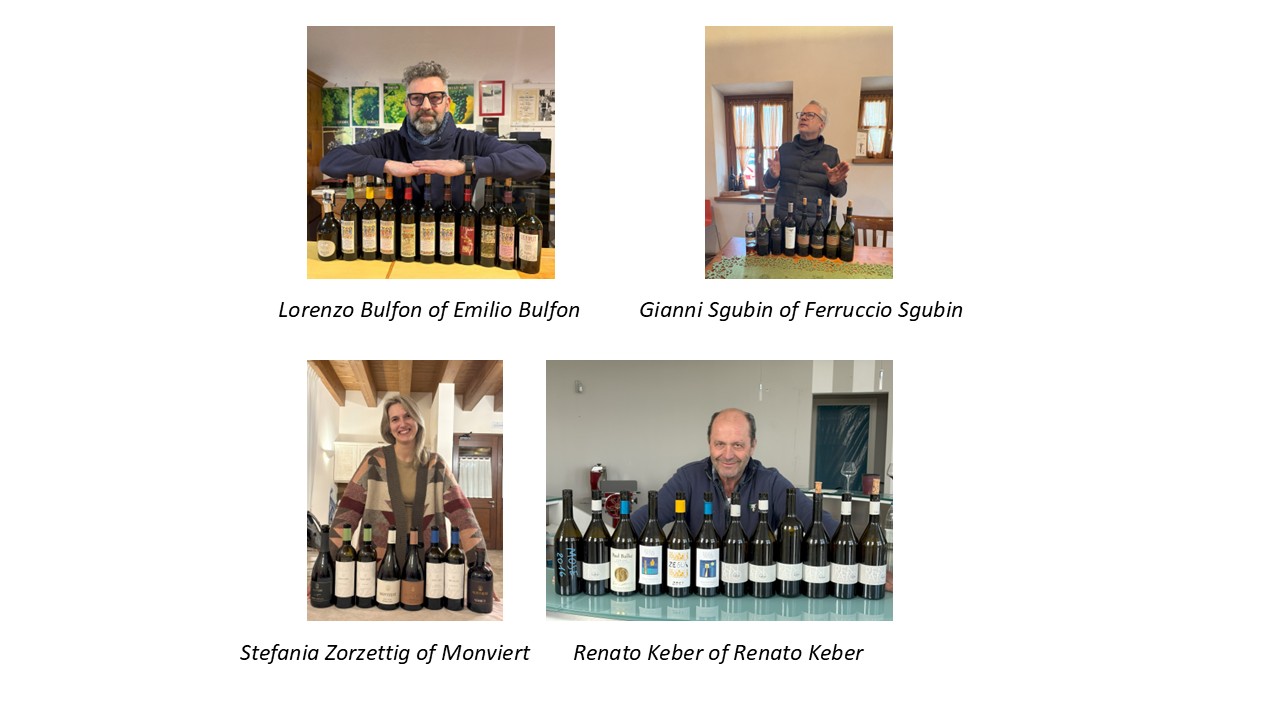
Wine from Slovenia’s Primorska region developed at a much slower pace than Friuli, despite coming from similar winemaking heritage. Together with Friuli, Primorska was initially under the Austrian Empire until the end of the first World War, then it became part of Italy. After the Second World War in 1945, it became part of Yugoslavia, who’s communist regime prioritized quantity of wine and grapes over quality; local winemakers were only able to resume quality-driven practices like their ancestors again after Slovenia declared independence in 1991. The region today has become the most important wine region of Slovenia, having preserved the most indigenous varieties and produces around 40% of the nation’s wine.
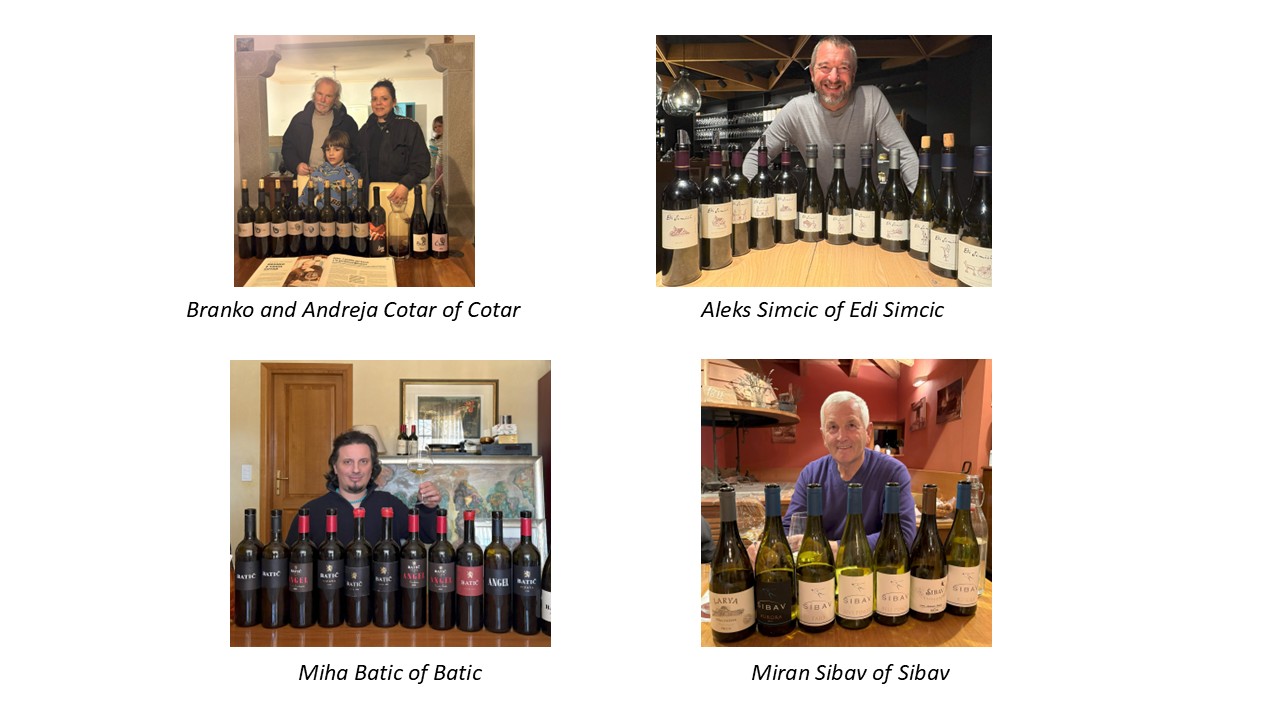
The trajectory of wine in Istria and Kvarner in Croatia is similar to Primorska, originally part of the Austrian Empire, then becoming part of the Kingdom of Italy, and then becoming part of Yugoslavia. After Croatia declared independence in 1991, the local growers and winemakers were finally able to return to practices that prioritized quality. The region is a small part of Croatia’s wine industry compared to Dalmatia (Southern Croatia) or Slavonia & Danube (Eastern Croatia), but is recognized for its consistent high quality. The region is also a major tourist destination thanks to its coastal surroundings and natural terrain, which helps drive interest and demand for the wines.
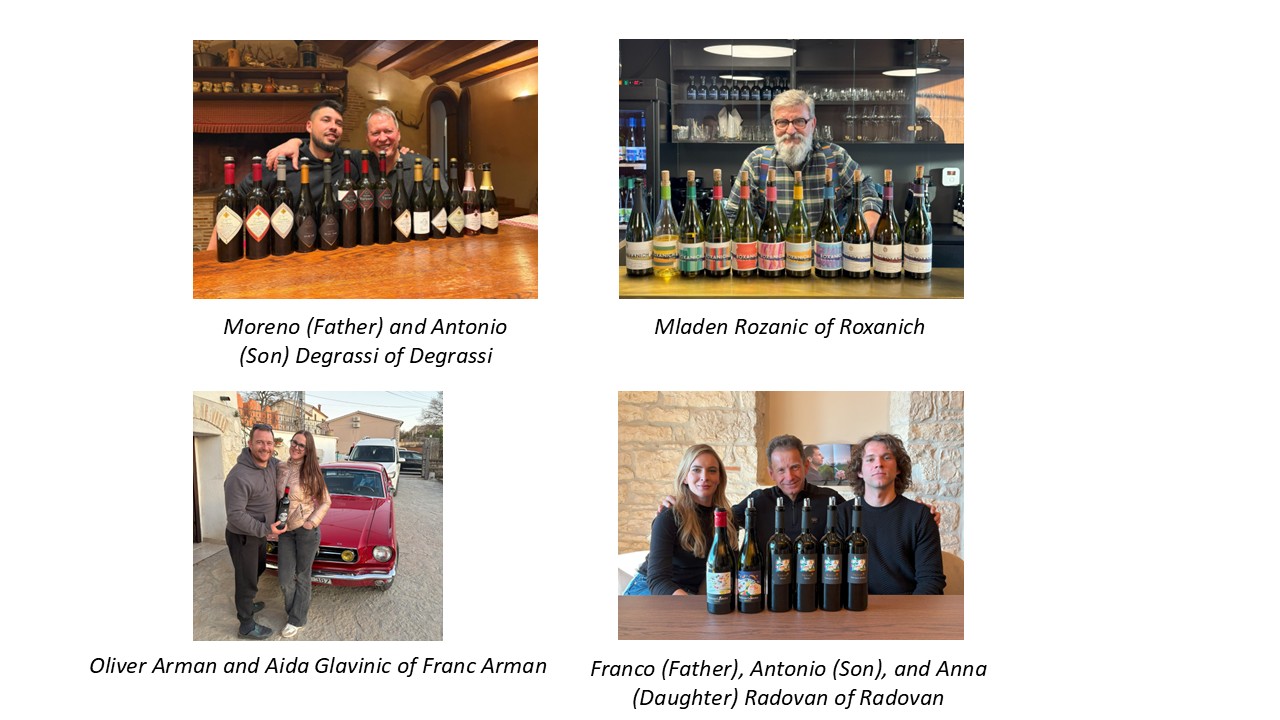
The grape varieties of the North Adriatic
The diverse yet connected cultural origins is mirrored by the diverse indigenous and international grape varietals that can be found throughout the area. There are, of course, some particular varieties that are only cultivated in certain pockets, but the moderated growing conditions of the North Adriatic has blessed the producers with the freedom to explore and implement their own expressions of the wide variety of grapes.
To talk about the various grape varieties, we can group them into indigenous and international varieties for easier understanding:
- Of the many indigenous varieties grown in the area, the most widely found ones include – Ribolla Gialla, Malvasia, Friulano, Refosco, Terran, and Schioppettino.
It is difficult to locate the exact time in history when these supposedly indigenous varieties arrived in the North Adriatic. But, these varieties are ubiquitously present in the different wine regions within the North Adriatic while being extremely limited elsewhere around the world. - Many are more familiar with international varieties that are grown in the area, among them are – Pinot Grigio, Sauvignon Blanc, Chardonnay, Pinot Blanc, Merlot, Pinot Noir, Cabernet Sauvignon.
These varieties are found all over the world, but they have been introduced to the North Adriatic from as early as the 1700s. The vast influence and trade networks of the Habsburgs may have been the reason these varieties found their way to the area in the beginning.
Note: There are obviously many more varieties, but this is just a snapshot of the varieties cultivated in North Adriatic.
The wines of the North Adriatic
The history of winemaking in the North Adriatic dates back to the Greek and Roman times. There always was a tradition of grape growing and winemaking, and this culture has continued to develop under different reigns (Venetian, Austrian, Italian, etc.). Today, there are many producers in this region that continue to advance the quality and standards of their wines; the wines are based on what they’ve learned from their ancestors and what they believe is most suitable to their growing conditions.
- White wine
Varieties include – Ribolla Gialla, Malvasia, Friulano, Pinot Grigio, Sauvignon Blanc, Chardonnay, Pinot Blanc
White wine from both indigenous and international varieties is still the cornerstone of the area. Friuli is the king of white wine in Italy, and the neighboring Primorska (especially Brda, which was part of the same region as Collio until the second World War) share many viticultural heritages. At most of the wineries we visited throughout the entire North Adriatic, white wine remains the majority of their production. - Orange wine
Varieties include – Ribolla Gialla, Malvasia, Friulano, Vitovska
Beyond just white wine, the white wines with extended skin maceration (i.e. Orange wine) has become a prominent category despite its relatively recent development in the area. Although the influence is unmistakably Georgian, the focus is the indigenous white varieties of the area, especially Ribolla Gialla and Malvasia. Thanks to the recognition gained by pioneering producers such as Gravner (Collio), Radikon (Collio), Movia (Brda), Skerk (Carso), Cotar (Kras), and Clai (Istria), the orange wines here are considered some of the best in the world. The dedication to orange wine is so strong, an Orange Wine Festival dedicated to orange wines is held annually at the town of Izola in Slovenska Istra. - Red wine
Varieties include – Refosco, Schioppettino, Terran, Merlot, Pinot Noir, Cabernet Sauvignon
The growing condition of the North Adriatic that is so suitable for white wine is also exceptional for red wine. The sunny but moderated climate, thanks to influences from the Alps and the Adriatic Sea, means the red grape varieties are able to ripen without losing acidity. Despite the popularity of white wines, producers across the entire area devote extensive energy and cellar space to make elegant and distinct wines from both indigenous and international varieties. - Sparkling wine
White varieties include – Ribolla Gialla, Malvasia, Chardonnay, Pinot Blanc; Red varieties include – Pinot Noir
The sparkling wines of the area are made out of love, and there are some producers even dedicated solely to sparkling. The preference is producing with traditional method using the indigenous varieties of Ribolla Gialla or Malvasia, while also incorporating some of the international varieties - Dessert wine
Varieties include – Verduzzo, Picolit, Malvasia
Dessert wine is a very small category of the area, partly due to consumers’ less than enthusiastic preference for wines with sweetness. But the rigorous climate and farming demands also make dessert wine challenging to achieve. Ramandolo, a region within Colli Orientali, is the only wine region dedicated to the production of dessert wines (from Verduzzo or Picolit), but there are still some producers throughout the North Adriatic that produce these wines during exceptional vintages. Many producers elsewhere in the North Adriatic also include dessert wines as a small part of their offering.
Most producers we have met chose to bottle their wines as single varietal, and there are even vineyard-specific single varietals to showcase exceptional sites. However, there is a tradition to produce blended wines, and some winemakers try to maintain this tradition and use blends to create their own expressions of the region. They are not following a specific formula, but determining what is most suitable based on their own knowledge, experience, and taste.
There is a philosophical approach behind every bottle that is produced, reflecting the winemakers’ understanding of their land, their vines, and their wine.
The winemakers of the North Adriatic
The producers of the North Adriatic are mostly family businesses. The proprietors’ fathers, grandfathers, sometimes even great grandfathers, grew grapes and made wine on this land, and tomorrow their sons and daughters will continue the family’s legacy as winemakers as well. Even for the producers in Slovenia and Croatia, where past political directives seriously damaged grape growing and winemaking capabilities, their families found ways to survive while maintaining the ability to make wines of quality. Fast forward to today, we met a lot of producers whose sons or daughters either are already in charge of winemaking responsibilities, are starting to work in the vineyard or cellar, or are in university studying oenology.
There are also local cooperatives that unite smaller growers who alone do not have the resources or scale to efficiently produce wine. The groups of growers pool their resources (and grapes) to collectively produce, market, and distribute wine. This arrangement allows the growers access to advanced equipment, technical expertise, and collective bargaining power, enabling them to compete with larger producers and secure better deals for supplies and sales.
With such a strong sense of family and tradition in the area, there are still new members of the community joining. These are individuals who come from outside of the industry and did not inherit any vineyards or facilities, but through love and enthusiasm of the potential of the area, managed to start making wines with their own understanding and vision.
Some parting thoughts
From our brief but extensive tour of the North Adriatic, we can sense how cultural and historical bonds can transcend modern political boundaries. It may not be a singular wine region in administrative terms, but it is united by a common devotion to viticulture.
For those who are unfamiliar with the concept or the wine regions, the range of wines are extensive in style and distinct in character. The producers of these wines are proud of their heritage and their lands, and are continuing to try to evolve and improve each year.
For those who are familiar with the wine regions within the North Adriatic, there is more to the wines than just the Sauvignon Blancs and Pinot Grigios. The orange wines (from outside of Collio), the red wines, the sparkling wines, and the dessert wines, all warrant attention from us.
A special thank you
Paul Balke, author of The North Adriatic, organized this very extensive experience throughout the area, covering producers located across Friuli (Grave, Isonzo, Collio, Colli Orientali, Carso), Primorska (Brda, Vipavska Dolina, Kras), and Istria. For further details about the North Adriatic, please check out his website or the book.
Also, the following are all of the producers whose wines we had the opportunity to experience during the trip. They are listed by region in no specific order:
- Friuli (Italy)
- Emilio Bulfon (Grave)
The winery was founded in the ‘70s by Emilio Bulfon, who dedicated himself to rediscovering and reviving ancient Friulian grape varieties that had nearly disappeared. Today, the winery and vineyards (c. 16 ha) are managed by his son Lorenzo, and is focused on cultivating rare native grapes such as Piculit Neri, Sciaglin, Forgiarin, and Ucelut, producing unique wines that highlight the region's heritage. - Pierpaolo Pecorari (Isonzo)
The winery was founded in the ‘70s by Pierpaolo Pecorari, on the land with vines planted by his father. They focus on crafting elegant and precise wines from indigenous and international varieties of: Refosco dal Peduncolo Rosso, Friulano, Ribolla Gialla, Pinot Bianco, and Sauvignon Blanc. Today, his son Alessandro manages the winery and vineyard (c. 30 ha) with his wife, Clizia, who is the oenologist.
“…there is always a vision for what we expect our wines to become, because we have been doing this for a very long time.” - Dri Roncat (Ramandolo, part of Colli Orientali)
The winery was established by Giovanni Dri in the ‘70s, with vines that were planted by his ancestors. Giovanni was the pioneer of Ramandolo who pushed for international recognition of their region and their quality of wines. They specialize in dessert wines made with the indigenous varieties of Verduzzo and Picolit, while also producing white and red wines from other indigenous and international varieties. Today, his daughter Stefania is in charge of the winery and their 8 ha vineyard.
“Our indigenous varieties, they are our past and our future.” - Le Due Torri (Colli Orientali)
This is a relatively young winery started by Ermanno Maniero, who’s background is an oilfield engineer. Having bottled his first vintage in 2018, he is free from legacy and tradition and can pursue vineyard management and winemaking practices that he feels is most sustainable and suitable for his vineyards (c. 5 ha). He focuses on both indigenous and international varieties, and produces a red wine from Tazzelenghe, an incredibly rare variety to find in Friuli.
“…a lot of wineries are dedicated with their principle because they said, my father, my grandfather made wine this way for 100 years… But we do not have to.” - Rodaro (Colli Orientali)
The winery’s history dates back to 1846 under the Austro-Hungarian empire. Established by brothers Luigi and Edo Rodaro, the winery and vineyard (c. 68 ha) is now managed by the sixth generation of the family, Paolo Rodaro (and his wife Lara). Their wines focus on the full range of indigenous and international varieties of the North Adriatic, and are one of the first in the area to produce traditional method sparkling that only uses Chardonnay and/or Pinot Noir. - Monviert (Colli Orientali)
This was founded in the ‘50s by the Zorzettig family. Initial it was named Ronchi San Giuseppe for the church of San Giuseppe that is at the foot of the hill of their vineyard; they rebranded as Monviert in 2019. Today, Fulvio Zorzettig and his sons and daughters manage the winery, making wines from their 92 ha vineyards which encompasses the full range of indigenous and international varieties. - Roncus (Collio)
Marco Perco established Roncus in the ‘80s, on land his grandfather had been cultivating as a tenant farmer since after the world war. Marco works with around 12 ha of vineyard, scattered throughout Collio (and some in Isonzo). His white wines are mostly single varietals from Ribolla Gialla, Friulano, and Malvasia, and Pinot Blanc; he does not have any Pinot Grigio or Chardonnay. He also crafts blended white wines that contains different proportions of the indigenous and international varieties.
“I wanted to focus on the wines that keeps the identity of this territory: Malvasia, Ribolla Gialla, and Friulano.” - Ferruccio Sgubin (Collio)
Established by Ferruccio Sgubin in the ‘60s, the winery today is run by his son Gianni Sgubin, and grandson Marco and granddaughter Margherita. With 20 ha of vineyards situated near the border with Brda, they primarily focus on the main indigenous and international varieties of: Ribolla Gialla, Friulano, Pinot Grigio, Sauvignon Blanc, Pinot Blanc, Schioppettino, Merlot.
“Collio has over 60 years history of producing wines… In Brda, everything only started in the 90s, they had to reinvent themselves from zero. But the territories are very similar… In the coming generations, I think the wines will become more similar.” - Renato Keber (Collio)
Established by Renato Keber’s father in the ‘70s, Renato’s family has been cultivating land in Collio since the 1900s under Austrian rule. Cultivating 15 ha of vineyards near the border to Brda, Renato and his daughter Tereza craft a wide range of single variety and blended white and orange wines. They age the wines extensively before release, even for the most entry level wines (at least 5 years before release). - Korsic (Collio)
Brothers Fabjan and Mitja Korsic now manage the winery, established by their late father Rudy. Their family has been cultivating vines in Collio for over 150 years, and only started to bottle their own wines this past decade. They choose to only grow and make wines from Ribolla Gialla, Friulano, Malvasia, and Merlot, wanting to be focused on what they believe to be the most important varietals.
“Wine is a mood, not just a drink.” - Zidarich (Carso)
Started by Benjamin Zidarich in 1988, the winery is located near the town of Prepotto on the coast of Gulf of Trieste, one of Italy’s most difficult region to cultivate vines. Benjamin and his son Jakob manage the 8 ha of vines, working primarily with the local varieties of Vitovska and Teran, along with Malvasia, Sauvignon Blanc, and Merlot. They are noted for their white wines with extended skin contact.
“We have been Austrians longer than Italians.” - Skerk (Carso)
Established by Sandi Skerk in 1990, the winery is also located near the town of Prepotto on the coast of Gulf of Trieste. She manages 6 ha of vines, focusing on extended skin contact wines using Vitovska, Malvasia, Pinot Grigio, and Sauvignon Blanc, and also produce red wines with Teran.
- Emilio Bulfon (Grave)
- Primorska (Slovenia)
- Marjan Simcic (Brda)
Marjan Simcic is considered the leading wine figure of Slovenia. The winery dates back to 1860 when Jozef Simcic first bought land in Medana to cultivate vines. The winery survived throughout the tumultuous period of the 1900s, and Marjan (the fifth generation) took over in 1988. Today, the winery has 25 ha of vineyards in Brda and Collio, and is known for producing single varietal white and red wines that express specific vineyard sites.
“The vines know no borders." - Scurek (Brda)
Started by Stojan Scurek in 1989, the family has been cultivating vines in the area since the 1850s for five generations. Today, Stojan and his five sons manage the winery, and have 32 ha of vines in Brda and Collio. They focus on blends of the indigenous and international varieties. - Klet Brda (Brda)
Klet Brda, established in 1957, is Slovenia's largest cooperative winery, uniting around 300 local winegrowing families across 1,200 ha of vineyards in Brda. They account for nearly half of Brda’s wine output, producing a wide variety of sparkling, white, red, and dessert wines. Darinko Ribolica, the main oenologist, leads the winemaking at the winery.| - Carga (Brda)
Carga winery has history dating back to 1767, when the manor house (where today’s winery and tasting room is located) was first built. Today, it is owned and managed by the Erzetic family, with Martin Erzetic as the current generation winemaker. They are known for their wide range of wines from indigenous and international varieties, and their flagship is the ‘Donna Regina’ traditional method sparkling made with Ribolla Gialla. - Sibav (Brda)
Sibav was formally established in 1964 in Brda near the border of Italy, but dates back as far as 1680 as a farm. Today, it is managed by Danjela Sibav and her uncle Miran. The winery has 10 ha of vineyards, and produces a wide range of still white, orange, red, and dessert wines from both indigenous and international varieties.
“The quality of wine is not because it is Italian or Slovenian… it is the quality of the vineyard and cellar.” - Medot (Brda)
The winery was established by Zvonimir Simcic in 1982. Considered as the “father of Ribolla Gialla”, Zvonimir championed the variety, believing it can rival international varieties to produce top quality sparkling wines. Today, the winery is led by Zvonimir’s son Igor, and it remains focused on producing Ribolla Gialla based sparkling and still wines from its 3 ha of vineyards. Before Medot, Zvonimir was the leader of Klet Brda at its establishment in 1957, building it to become Slovenia’s largest cooperative before retiring and focusing on Medot in 1982. - Domaine Vicomte Noue Marinic (Brda)
The winery is a partnership between Alis Marinic and Charles-Louis de Noue since 2017, although the history goes back much longer. Alis’s family has been growing and making wine in Brda since 1910, while Charles-Louis de Noue is the nephew of Anne Claude Leflaive of Domaine Leflaive of Burgundy. The winery has 140 ha of vineyards (some are in Vipavska Dolina), and there is a focus on segmenting the best vineyards for single vineyard bottlings. They produce still white and red wines from indigenous varieties and Chardonnay, of course.
“…when we make wine, not all of our wines go in the bottle. …we are really selective, if it's not good, we don't put it in the bottle." - Edi Simcic (Brda)
Edi and Marica Simcic began cultivating vines in 1960, and started making wine in 1989. Today, their son Aleks manages the winery while grandsons Jure and Jakob are the winemakers. The family manages 13 ha of vineyards in Brda, producing still wines from the full range of indigenous and international varieties available.
“…we are trying to make wine that we really like to drink.” - Batic (Vipavska Dolina)
The Batic family has been farming lands in the Vipava valley since the 1500s, when monks would make wines for the holy mass. Today, father and son Ivan and Miha Batic manages the winery and the 40 ha vineyard, focusing on wines with extensive skin maceration using mainly indigenous varieties for their whites and international varieties for their reds. - Cotar (Kras)
Branko Cotar began making wine in 1974 initially to supply wines for his two restaurants in Kras. Eventually, they started making wine full-time in 1990. Today, he and his son, Vasja, manage the winery and the 8 ha vineyard. They specialize in making wines with extensive skin maceration from the indigenous varieties of Vitovska, Malvasia, and Teran, as well as from international varieties Cabernet Sauvignon and Merlot.
“The first wine I made was in 1974, and it is still made the same way today…”
- Marjan Simcic (Brda)
- Istria and Kvarner (Croatia)
- Roxanich (Istria)
Roxanich was established in 2005 by Mladen Rozanich. A mechanical engineer by trade, he was an avid consumer of wine before he first started making wine in 1998. Today, Roxanich is both a winery and a hotel in the town of Motovun, run by Mladen and his six daughters. The wines are made from the full range of indigenous and international varieties available in their 26 ha vineyard.
“People say wine is made in the vineyard. Yes, the raw material has to be very well prepared, but you still have to make wine… That's why the cellar is very important to me.” - Cuj (Istria)
The Kraljevic family has been farming and making wines near Umag since the 15th century, and it was in 2006 when Danijel formally established the winery. Today, his son Evan is the winemaker and manages the 6 ha vineyard, focused on producing wines made from their indigenous varieties Malvasia and Teran, as well as some Muscat and Merlot. The winery also has a three bedroom bed and breakfast. - Degrassi (Istria)
First started by father and son Bruno and Moreno Degrassi in the 1980s to produce house wine for their restaurant, they began bottling commercially in 1996. Today, with Moreno in charge, they have around 16 ha of vineyards near Umag, and produce over 40 different cuvees of wine (including traditional sparkling), from both indigenous varieties and international varieties. - Coronica (Istria)
The Coronica family had been cultivating vines near Umag since the early 1900s, and Moreno Coronica, the current proprietor, established the winery in 1992. The estate has around 23 ha of vines, and is known for their commitment to the indigenous varieties of Malvasia and Teran.
“…Terrano es vino de futuro.” - Radovan (Istria)
Located towards the south of the peninsula in Visnjan, Franko Radovan established the namesake winery in 1998. His family had been making wines for generations, but it was Franko who decided to modernized the winemaking after working in Italy and witnessing the wines being served. Today, his son Antonio is the winemaker, and manages the 11 ha vineyards focusing on indigenous varieties of Malvasia and Refosk, as well as international varieties of Chardonnay, Sauvignon Blanc, Cabernet Sauvignon, and Merlot. - Franc Arman (Istria)
Franc Arman in 1996 started commercializing their family’s wine operations. Their family had been cultivating vines and making house wines since the 1850s. Today, his son Oliver (the 7th generation of the family) manages the 25 ha vineyard, focusing on Malvasia, Sauvignon Blanc, Teran, Merlot, and Cabernet Franc.
“Nobody forced me to do this—not my father, grandfather, or mother… this isn't just a job, it's my life.” - Clai (Istria)
Established by successful restauranteur Giorgio Clai in ‘95, Clai is considered by many the first and most prominent Croatian winery producing orange wines. Located near the town of Krasica, Clai has 8 ha of vineyards Giorgio inherited, but they also work with other growers cultivating indigenous old vine varieties. Under new ownership, they have hired young South African winemaker Tim Whitfield who is continuing the vision Giorgio had started.
“…with a place like this, you don't change the DNA [of the wines]. It's that simple.”
- Roxanich (Istria)
For more wineries located in the North Adriatic, please head to Grape Collective's youtube page: Radikon, Villa Job, Tenuta Luisa, Rodica, Matosevic, Kozlovic, Piquentum.
